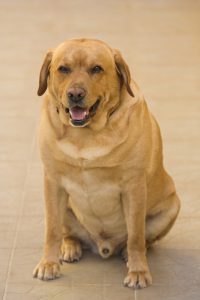
Between one and two in three dogs (34-59%) is overweight. Obesity in dogs is associated with reduced lifespan, mobility problems, diabetes, cancer and heart disease, as it is in humans.
The increase in levels of obesity in dogs mirrors that in humans – reduced exercise and ready access to high calorie food are likely to blame in both. However, although owners control their pets’ diet and exercise, some breeds of dog are more susceptible to obesity than others, suggesting the influence of genetic factors.
Some breeds are more commonly obese. Genes are almost certainly to blame.
We want to find out which genes and why. Some breeds, like Labradors, are predisposed to obesity. By studying obesity in dogs we hope to improve understanding of both dog and human obesity.
On this website you can find information about the project, what is already known and what we are likely to find out, and how to get involved.


